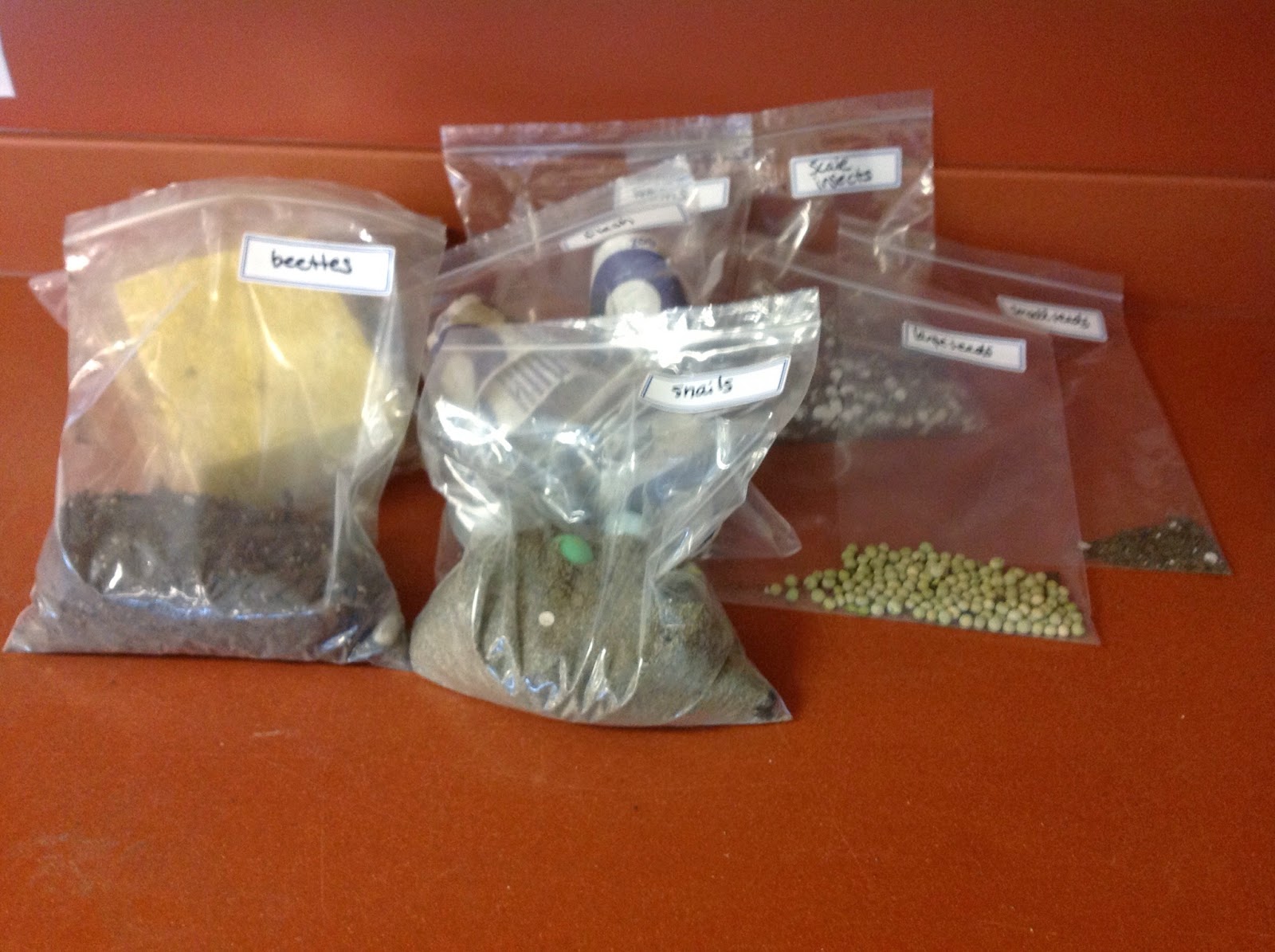My grade sevens love to be active while learning. As educators, we know the importance of movement and active learning to help students learn optimally. One of my favorite activities to do when we are studying our ecosytems unit is bird beak adaptations. It's a classic for good reason! I don't say much about the activity before we begin. I strongly believe in the moto I heard from everyone's science hero, Bill Nye, "Show then tell." As my grade sevens enter the room, they chose a tool from a bin- tweezers, tongs, spoons, droppers, staple remover, etc. I tell them that they are no longer my wonderful grade sevens, but have transformed into lovely, hungry birds. They must eat to survive! The students tape large Dixie cups to their shirts to act as their "stomach" while they eat. They move station to station trying to eat enough "food" from the specific ecosystem as they can. They are timed at each station, which adds an element of excitement to the activity. After each "feeding", they tally how much food they managed to get into their stomachs, ready the station for the next group and move on. During our debriefing, the students really understand the relationship between ecosystem characterisitcs, available food sources and successful adaptations. Teaching evolution by natural selection is a sinch after this!
I keep the "food" supplies, beak choices and activity sheets in a box ready to go for next year. Here are some pics of what I use. In hindsight, I wish I had taken some pictures of the students doing the activity. Oh well, there is always next year!




No comments:
Post a Comment